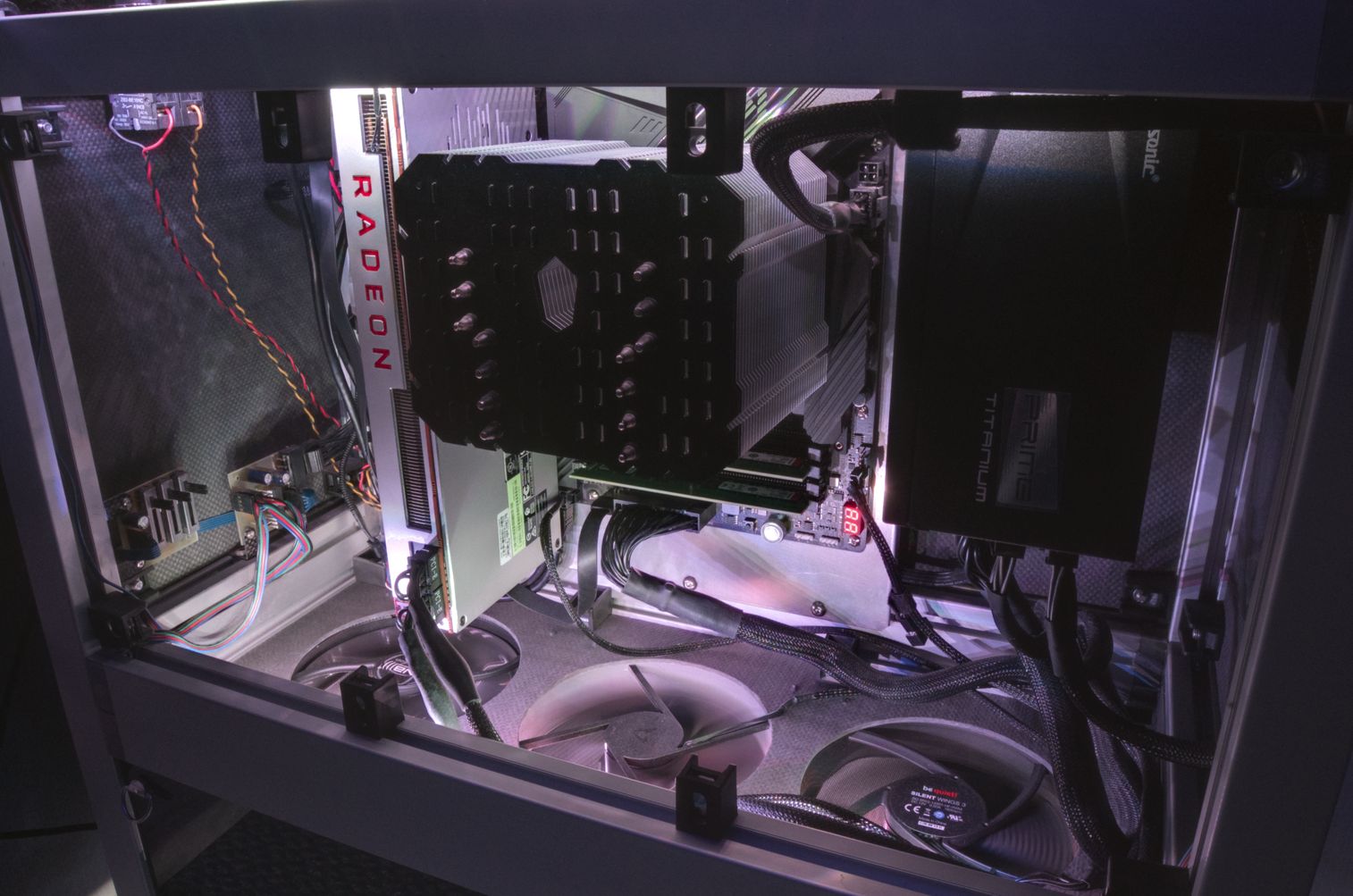Case Fan Duct
My PC case is designed to be able to run without a fan on the CPU heatsink (a Thermalright Le Grand Macho RT, one of few heatsinks specifically marketed to work like this), relying on a case fan to keep it cool. After originally completing the case, I used a sheet of plastic to direct air from the fan into the heatsink. Without doing that, much of the air simply flows around the heatsink without contributing to cooling it. I never ran any proper tests or compared different arrangements though... until now.

The first attempt was a tube. The idea was to match the shape of the fan, which should minimize turbulence. The height of the tube is lower nearer the motherboard, partly so it doesn't completely block air over the RAM, and partly because it would be physically impossible to squeeze the tube into place if it was full height all around its circumference.

The tube didn't work as well as I wanted, and I surmised that this was due to air flowing out the sides of the heatsink, not all the way through. So the second attempt was a partial box made of sheets of plastic long long enough to go from the fan all the way to the top of the heatsink.

There were some other variations and permutations that I tried, which I shall not document here, as it would be too much data. These three are the most interesting.
To test the performance of the different arrangements, I ran IntelBurnTest 100x (which takes about 12 minutes). This fully loads all cores of the CPU (a Ryzen 5950X), maximizing its power consumption at the default 140W limit long enough for the CPU to reach maximum temperature. I used HWiNFO to record both CPU temperature (Tctl) and fan speed at the default 2s interval, saving it to a CSV file which I could then chart with Veusz.
It's obvious that the "square" is best, reducing CPU temp by about 4°C and fan speed by about 175rpm. It actually completes IBT a few seconds faster too, since the CPU will boost to higher frequencies when it's kept cooler. The tube is only half as good.